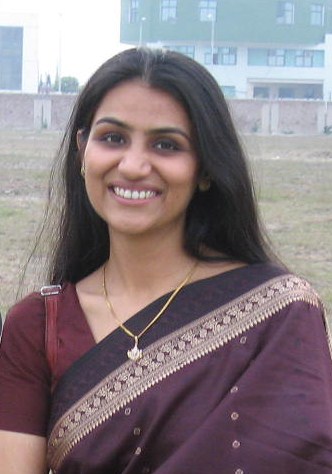India’s tomorrow breathes a new hope for ALL: hope that dwells on the constitutional victory of democracy to introduce reforms and its set-up that makes every Indian proud of his/her constitutional rights and responsibilities, enjoyed since 1956. Rights like Universal suffrage that empowers every citizen, rich or poor, man or woman; working or non-working; deprived or privileged to participate and introduce the wave of change he/she desires. A wave clasped in the hands of the common man. India and Indians witnessed this power of a common man in the Delhi State Elections and the 16th Lok Sabha Elections (2014) much in spirit of the four pillars of democracy. The elections celebrated the people’s mandate (with the highest ever voter turnout of 66%) for the formation of a new government with a single party receiving a majority.
The new parliament has 314 debutante parliamentarians (with 58% of the total new strength), 61 women (18%), a very weak opposition of the previous government (with only 44 seats) and no leader of opposition. With little to complain, the government shoulders expectations to resurrect the economy to 9.3% GDP growth rate with Mahatma Gandhi’s vision of self-reliance backed by a strong secular sovereign federal union as envisioned by our forefathers and freedom fighters.
Growth in India needs a new commitment, cooperation and communication to the “Made in India” brand in the national and international markets whether it is about products, factors or the money markets. Market efficiencies of allocation, production and information can be created with better digital education, healthcare and economic infrastructure; monetized economy; competitive markets; transparent, accountable government regulators, regulations and respect for the law of land. Competitive product markets have already been revolutionized by India’s long standing commitment to WTO, full current account convertibility and partial capital account convertibility. Supply bottlenecks in infrastructure (road, railways, power, water and others), regulations and capital continue to spike asset prices and suboptimal quality. Taxes are attempted to be rationalized using Direct Tax Code (DTC) and Good and Services Tax (GST) reforms with e-governance facilities that are likely to add value to the industrial output.
On the other hand, factor markets demand land and labour reforms with greater financial intermediation that supports new banks (New RBI Bank License scheme has recently permitted IDFC and Bandhan Financial Services and the first woman’s bank-Bhartiya Mahila Bank) or new accounts (under Pradhanmantri Jan-Dhan Yojana launched on 68th Independence day – 15th August 2014) that provide incubators/ lending facilities for old/new entrepreneurial ventures at small, medium (i.e. MSMEs) or large scales with domestic and international players.
Financial intermediaries and markets in India have been resilient to the global financial crisis. All Indian banks meet the capital adequacy requirement as per BASEL III and are required to adopt other risk measures by March 2018. The Reserve Bank of India (RBI) to protect banks from tight liquidity position has followed a loose monetary stance by reducing the CRR (Cash Reserve Ratio) to 4% and the Statutory Liquidity Ratio (SLR) to 22%, further adjusting the repo rate to 8%, the reverse repo rate to 7% and the bank rate to 9%.The Credit to GDP ratio is 52.5% (2012-13),with scheduled commercial banks credit deposit ratio being 77.9% (2012-13). The Saving deposit rate is 4%; term deposit rates are 8-9.05%, and the lending base rate is 10-10.25% (RBI, 2012-13). An overexposure in sensitive sectors such as capital markets, derivative markets and real estate markets is protected by high risk weightages and strict regulations. Public confidence with universal banking, e-banking and mobile banking is linked to capital and goods markets that adds to e-commerce business lines. Capital markets are buoyant at their highest levels ever with BSE (Bombay Stock Exchange) crossing the 26,000 level mark and NSE (National Stock Exchange of India) crossing the 7,800 level mark.
India has been self- reliant in the past two decades and a contributor to the world economy in various respects. India has contributed US$ 10 billion to IMF and has recently been a founding member to the New Development Bank – BRICS bank (Agarwal, 2004) besides several grants that it continues to make to its neighbors and others from time to time. On an average in the past five years (2009 -2013), the country has observed a GDP-growth rate of 6.8%; GDS of 32.16%; GDI of 35.6%; gross fixed capital formation of 31.42% with private and public sector contribution of 25.2% and 8.6%; inflation rate of 7.12%; forex reserves of US$ 294.86 bn with an average import cover of 12.5 months (2000-10); merchandise export and import growth of 12.2 % and 9.4%; foreign direct and portfolio investment of US$ 192.83bn and US$ 18.53bn; external debt of US$ 400bn (in 2013) (Economic Survey, 2013-14).
The recent ADB estimates provide that India is likely to achieve a GDP growth rate of 5.5% , 6% (2014, 2015) where developing Asia is likely to grow at 6.2% , 6.4% (2014, 2015). Inflation is estimated at 6%, 5.8% (2014, 2015); foreign exchange reserves at US$ 304 bn (2013-14) that are likely to keep the rupee stable and is currently hovering at INR/1USD of 60.4270; current account deficit is expected at 2.8% (2014, 2015) with a growth in merchandise exports and imports of 8%, 10.5% (2014,2015), 7.8%, 8.2%(2014, 2015) respectively. Foreign direct and portfolio investment is expected to be US$ 307.63 bn (2014) and US$ 4.8bn (2014) (ADO, 2014).
Fiscal deficits are much in control and provide a comfortable buffer for balanced growth. The government has estimated that the fiscal deficit would be 4.5% of GDP (2013-14) with a revenue deficit of 3.2% and primary deficit of 1.2%. Union Budget 2014 estimates government expenditure at INR 36,555 bn of which 57.8% is aimed at developmental activities (railways, communications and non-departmental commercial undertakings) and 42.32% for non-development [5.57% (defense), 14.75% (interest payments), 0.84% (tax collection charges), 3.23% (police), 17.94% (others)]. Revenue collections (2013-14) are estimated at INR 25,373 bn with 80% revenue collections (income Tax, corporation Tax, customs, union excise duties, sales tax and others) and 19.90% non-revenue collection (internal resources of public sector undertakings). The gap would be financed 98.9% from the internal markets by way of market loans, small savings, state and public provident funds, borrowing from RBI and other miscellaneous capital receipts (Economic Survey, 2013-14)
Factor markets in India are labour intensive and need social reforms and investments in schemes that provide employment opportunity, education, training, healthcare and social security. The introduction of so-called AADHAR card, NAREGA, MANREGA or other employment guarantee schemes along with schemes that target women/ others health and education and other disadvantage groups along with the establishment of new IITs, IIMs and vocational study centers is likely to contribute to the development of the demographic dividend in India along with other developmental government expenditures. Primary education has been largely ignored by the government or has been restricted to the provisions of mid day meals that ensure attendance and not quality education.
The contributions of Indian Army’s wing NCC, social outfits like RSS and many other NGOs like SEVA that can educate, train, employ common people has been neglected. Though, the importance of Panchayat Raj systems and Village administration blocks has been reemphasized. Further, the present government has decided to scrap the Planning commission and set up a new institution that is more grounded to the realities of the economy and its problems. The recent railway budget and Union budget offered progressive steps by retaining social security expenditures of NREGA, MANREGA, Food security bill and subsidies. Passenger fares have been increased in an attempt to reduce subsidies and provide for better and secure services (Union Budget 2014, Rail Budget, 2014).
The government has reintroduced the Kisan Vikas Patra and many other bond schemes to fund its expenditures. This is likely to crowd out a lot of private investment, given 6.90 coupon Government Security maturing in 2019 yield is 8.90-8.097% where the average GSec yield has been 7.2% (2000-10). Call or Money Notice rate has risen from 5.8% (2009-10) to 8.1% (2012-13). In India the modal deposit rate for bank is 7.26%; modal lending base rate is 10.25% with variations in specific sectors {home (10.93%); vehicle (12.38%); agriculture(11.67%); SME (12.95%); education (13.12%)} (Trend and Progress Report, RBI, 2012-13). Variations of 2.72% and -0.5% are presently accepted for tightening and easing monetary stances. High inflation and interest rate often restrict consumerism and industry’s capacity to take loans.
Progress is envisaged that makes this country and its citizens more accountable, transparent and progressive. Much is on the way with the formation of the special investigation team (SIT) on black money and introduction of bills like the Lok pal Bill, Accountability Bill, Whistle blower Bill, Grievance Redressal Bill, Public Procurement Bill and Administrative Reforms Bill that would further empower the common man (Agarwal, 2004; Agarwal 2014). The Right to Information Act (RTI) and Judicial Bill has already put many government offices and their administrations under the scanner of the common man that is within his reach. Many ills would be taken care if the reforms are introduced and implemented well. Many macroeconomic aggregates would see positive corrections whether they are about the GDP forecasts, inflation, asset bubbles, money estimates, investment returns, food scarcities or others. Well, it’s hard to believe that such corrections are possible and I may appear as an optimist building sand castles. But the economic ability exists that such a miracle with its reforms can curb or limit the bad/ black money that throws out the good money, regulations and people from the market. Progress has already started showing the ray of light.
Progressive outlook, banking on the demographic dividend of the educated workforce and young workforce along with high reservoirs of natural and manmade resources make a compelling case for rich dividends for the Indian economy. Dividends that create value for everyone not only in terms of macroeconomic aggregates (measured of output, price and unemployment) but for a promise of life that honors itself with dignity and pride. Meaning that embraces growth and its deliverable for every citizen of this country whether included in the slogan of ‘Inclusive growth’ or in the slogan of “Growth for everyone with everyone’ colloquially put as –“sabka saath, sabka vikas” (that is for 1.228 bn Indian Citizens including 269.8 million people (21.9%) people below the poverty line).
Not just in words but in actions and spirit that lift up the India economically, socially, politically and internationally to a higher pedestal than what it stands today. A progress that protects the honor and dignity of women, provides food, shelter and security to children, senior citizens and the other underprivileged classes – an economic progress that castes away the evils of caste, religion and terrorism and makes every Indian proud of his /her contribution to the country. Jai Hind.
References
Agarwal, J.D. “Volatility of International Financial Markets, Regulation and Financial supervision.” Finance India March 2004: 15-36.
Agarwal, J.D. and Aman Agarwal. “International Money Laundering in the Banking Sector.” Finance India June 2004: 767–778.
Agarwal, Yamini. “Black Money: Its Genesis and Impact on Indian Economy.” National Institute of Financial Management,Public Finance & Policy Program (For Customs and Central Excise Officers). Faridabad, Haryana, 17th July 2014. ppt.1-31.
Bank, Asian Development. Asian Development Outlook 2014: Fiscal Policy for Inclusive Growth. Manila, Philipines: Asian Development Bank, 2014.
Finance, Ministry of. Economic Survey. Delhi: Ministry of Finance, Government of India, 2013-14.
Global Financial Stability Report. Semi-Annual, Washinton, D.C., USA: Monetary and Capital Markets Department on Market Developments and Issues, International Monetary Fund, April 2014.
Reserve Bank of India. Annual Report. Annual, Delhi, INDIA: Reserve Bank of India, 2012-13.
Reserve Bank of India Trend and Progress Report of Banking. Annual, Delhi, INDIA: Reserve Bank of India, 2012-13.
Union Budget 2014-15, Ministry of Finance, Government of India

Yamini Agarwal
Professor and Vice Chairman (Academics)
Indian Institute of Finance (IIF), Delhi


Back to Start page



